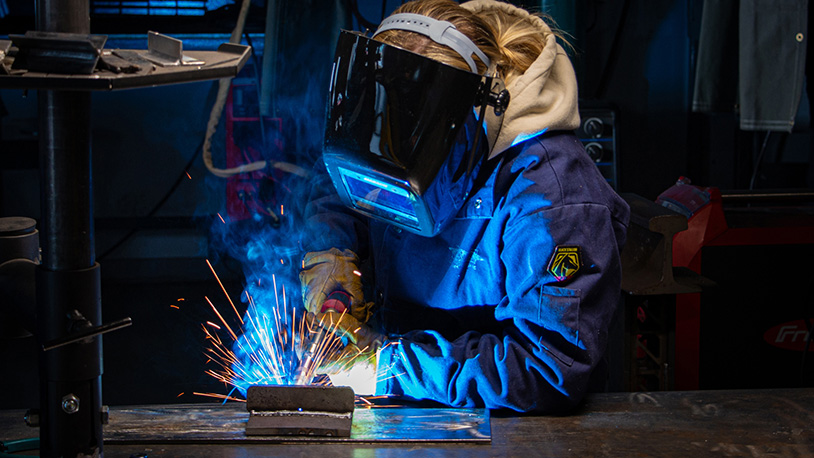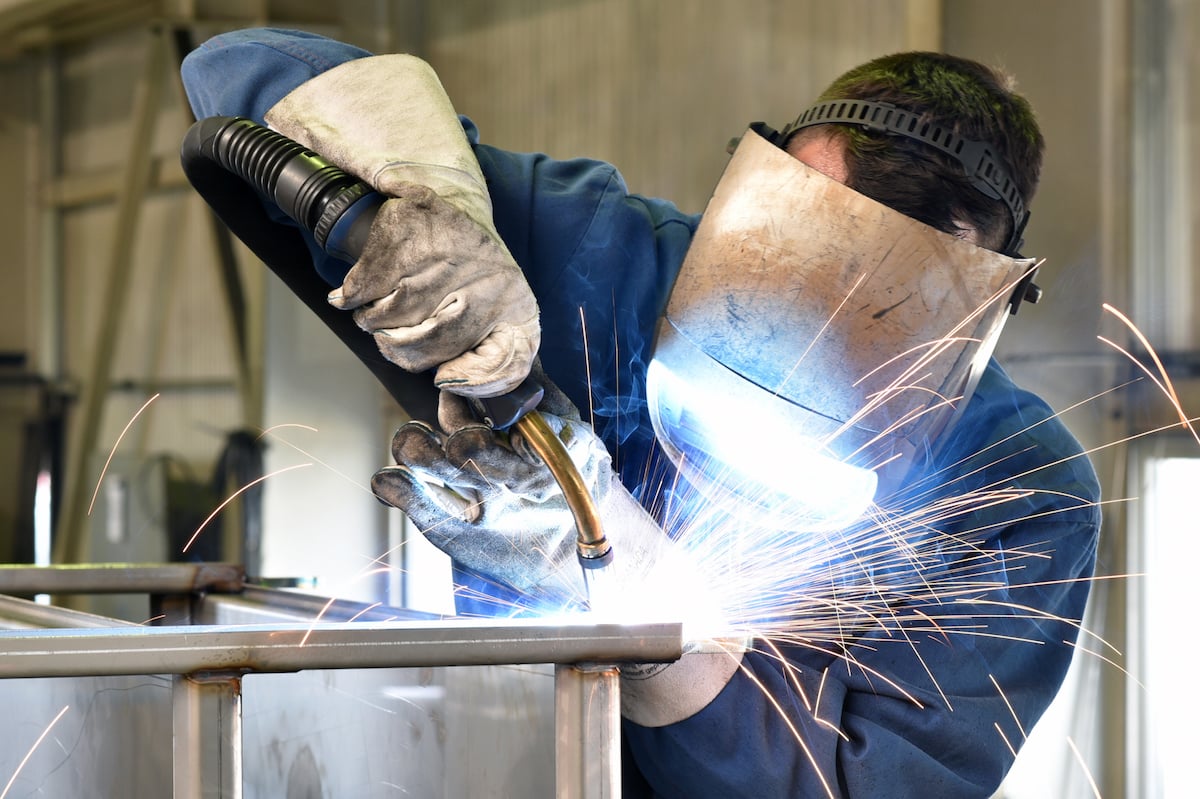Common Welding Repair Work Issues and Exactly How to Address Them Effectively
Welding repair services commonly encounter a series of concerns that can endanger the honesty of the final product. Common problems consist of insufficient infiltration, porosity, and imbalance, to name a few. Each flaw offers special difficulties that call for certain strategies for resolution. Comprehending these concerns is crucial for welders intending to improve their outcomes and skills. This conversation will check out these typical welding repair service problems and reliable approaches to address them.
Insufficient Penetration
Poor infiltration takes place when the weld steel falls short to fully fuse with the base material, leading to weak joints and possible architectural failures. This issue usually originates from inadequate heat input, inaccurate electrode angle, or inappropriate welding speed. Welders may encounter insufficient infiltration because of a mistake of the essential parameters for a particular product thickness or kind. Additionally, contamination on the base product's surface area can hinder reliable bonding, aggravating the issue. To deal with inadequate penetration, welders ought to guarantee appropriate setups on their devices and keep a clean job surface. Normal assessment of welds is recommended to determine any kind of deficiencies early, enabling timely adjustments and the prevention of compromised structural stability in welded settings up.
Porosity
Porosity is a common issue in welded joints that shows up as small gas bubbles entraped within the weld metal. This problem can compromise the stability of the weld, causing minimized toughness and potential failure under anxiety. Montana Mobile Welding and Repair Belgrade Fabrication. Porosity normally arises from contamination, dampness, or incorrect welding methods, which permit gases to run away into the liquified weld pool. To address porosity, welders ought to assure proper surface prep work, preserve a clean workplace, and utilize ideal welding criteria. In addition, choosing the best filler product and securing gas can minimize gas entrapment. Normal assessment and screening of welds can assist identify porosity early, guaranteeing prompt corrective actions are taken, thus preserving the high quality and dependability of the bonded structure
Imbalance
Imbalance in welding can emerge from various factors, consisting of inappropriate arrangement and thermal expansion. Comprehending the origin causes is important for effective resolution. Numerous adjustment methods are offered to straighten parts and ensure architectural integrity.
Reasons for Imbalance
Welding misalignment usually originates from a variety of underlying issues that can jeopardize architectural integrity. One main reason is incorrect fit-up of parts prior to welding, which can lead to spaces and unequal surface areas. Variants in thermal development throughout the welding process can also cause distortion, particularly if the materials being joined have different coefficients of growth. In addition, insufficient securing and fixturing may stop working to hold elements securely in location, resulting in activity during welding. Badly maintained equipment, consisting of welding devices and devices, might introduce disparities in the weld grain, additional contributing to imbalance. Finally, operator error, coming from insufficient training or experience, can additionally play a substantial function in developing misaligned welds.
Improvement Methods Offered
Dealing with imbalance effectively requires a combination of rehabilitative strategies tailored to the details problems available. One usual technique is using fixtures or jigs to hold parts in the appropriate placement during welding, guaranteeing regular placement. Additionally, preheating the products can help in reducing distortion and improve fit-up. For considerable misalignment, mechanical realignment strategies, such as utilizing hydraulic jacks or clamps, can be used to correct the setting prior to welding. Post-weld heat therapy might additionally be necessary to ease stress and anxieties brought on by misalignment. Finally, mindful examination and change during the setup phase can stop misalignment concerns from ending up being substantial issues, promoting a smoother welding procedure and improving total architectural integrity.
Distortion
Distortion is a common difficulty in welding that can develop from various aspects, including uneven cooling and heating. Understanding the reasons of distortion is important for executing effective prevention strategies. Addressing this issue not only improves structural stability yet also enhances the general quality of the weld.
Sources of Distortion
When subjected to the intense heat of welding, materials typically go through modifications that can bring about distortion. This phenomenon largely occurs from thermal growth and tightening throughout the welding process. As the weld location warms up, the product expands; upon air conditioning, it acquires, which can develop interior anxieties. In addition, uneven home heating across a work surface can intensify these stresses, leading to warping or bending. The kind of material likewise plays a substantial duty; steels with varying thermal conductivity and coefficients of expansion may react in a different way, causing unforeseeable distortions. Inadequate joint style and poor fixturing can add to misalignment throughout welding, enhancing the probability of distortion. Understanding these causes is vital for effective welding repair work and prevention approaches.
Prevention Techniques
Reliable prevention strategies for distortion during welding concentrate on controlling heat input and making sure correct joint layout. Preserving a constant warmth input aids to minimize thermal development and contraction, which can lead to distortion. Utilizing techniques such as pre-heating the work surface can additionally decrease the temperature slope, promoting uniform heating. Additionally, choosing proper joint designs, such as T-joints or lap joints, can boost security and lower anxiety concentrations. Implementing correct fixturing to secure the work surfaces in area further help in preserving positioning during the welding process. Lastly, staggered welding series can disperse warmth a lot more evenly, stopping localized distortion. By applying these approaches, welders can significantly reduce the chance of distortion and improve the general high quality of their welds.
Fracturing
Fracturing is an usual problem encountered in more info welding repair services, typically resulting from various factors such as improper cooling prices, product selection, or inadequate joint preparation. The event of cracks can considerably compromise the integrity of the weld, bring about potential failures during procedure. To address this concern, welders have to initially assess the origin, making certain that materials are compatible and suitably chosen for the certain application. Furthermore, controlling the air conditioning price during the welding procedure is essential; rapid air conditioning can induce anxiety and cause splitting. Proper joint design and prep work likewise add to minimizing the risk. Carrying out these strategies can improve weld quality and sturdiness, eventually decreasing the possibility of fracturing in finished weldments.

Insufficient Blend
A significant issue in welding repairs is insufficient fusion, which happens when the weld metal does not appropriately bond with the base product or previous weld passes - Belgrade Fabrication. This issue can result in weaknesses in the joint, possibly endangering the stability of the welded structure. Variables adding to insufficient combination consist of insufficient warmth input, inappropriate welding technique, and contamination of the surfaces being signed up with. To resolve this issue effectively, welders ought to ensure appropriate pre-weld cleaning and surface prep work, along with readjust their welding specifications to accomplish adequate infiltration and combination. Regular evaluation during the welding process can additionally assist identify incomplete fusion early, allowing for timely restorative actions to improve the overall top quality of the weld
Overheating
While welding fixings can enhance architectural integrity, overheating offers a significant obstacle that can cause product deterioration. Extreme warm during welding can modify the mechanical buildings of steels, causing minimized strength, enhanced brittleness, and bending. This phenomenon is especially vital in high-stress applications where structural reliability is vital. Determining getting too hot can include aesthetic examinations for discoloration or distortion, as well as keeping track of temperature during the welding process. To alleviate the threats connected with overheating, welders must utilize proper strategies, such as controlling warm input, readjusting travel rate, and utilizing ideal filler products. In addition, applying pre- and post-weld heat treatments can aid bring back material residential properties and enhance the overall high quality of the repair service, guaranteeing long-lasting performance and safety.
Frequently Asked Questions
What Are the Common Indications of a Welding Issue?

Just How Can I Evaluate My Welds for High quality?
To test welds for quality, one can use aesthetic inspections, ultrasonic screening, and radiographic techniques. Each strategy guarantees architectural honesty, determines defects, and verifies adherence to specified criteria, ultimately improving the integrity of the bonded joints.
What Safety Safety Measures Should I Take While Welding?
When welding, one need to prioritize security by using suitable personal protective equipment, making certain proper ventilation, protecting combustible products away, keeping a tidy work area, and being conscious of surroundings to avoid injuries and crashes.
Can I Repair a Weld Without Redoing the Entire Joint?
Fixing a weld without remodeling the whole joint is feasible, relying on the damage (Montana Mobile Welding and Repair Fabrication). Methods such as grinding, adding filler product, or using a welding procedure can properly address details flaws while maintaining the bordering structure
What Tools Are Vital for Efficient Welding Fixes?
Vital tools for effective welding repair services consist of a welding equipment, cable brush, grinder, protective equipment, clamps, and filler products. Each tool plays an important function in making sure quality and safety throughout the fixing process. Porosity commonly develops from contamination, dampness, or inappropriate welding methods, which allow gases to run away into the liquified weld pool. Inadequately kept tools, consisting of welding machines and tools, may introduce variances in the weld bead, more adding to misalignment. When subjected to the intense warmth of welding, materials frequently undergo adjustments that can lead to distortion. Splitting is an usual issue encountered in welding repair work, usually resulting from different factors such as incorrect cooling prices, product option, or inadequate joint preparation. A considerable issue in welding repair work is insufficient fusion, which takes place when the weld metal does not properly bond with the base material or previous weld passes.